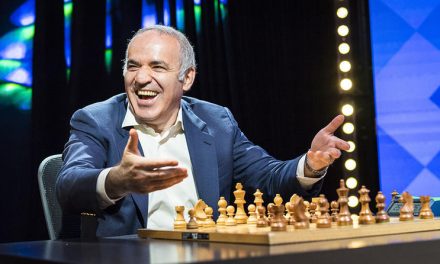Update [2005-8-8 4:9:45 by deano]: A few sentences reworded for clarification. It sounded a little off!
I believe there is a disconnect between certain practices in contemporary art and most of the public’s idea of what constitutes art. Part of the problem, in my humble opinion, is a lack of the proliferation of recent art history. While art is nebulas, art history can function as an important tool in exposing us to new ideas and helping us understand art.
This may be an outcome of the idea that it is common for people to reject what they don’t understand. What follows is a general attachment to received opinion about what art is, and what art should be.
If culture is important, as an influence in our society as well as our political climate, and we believe art is a fundamental cornerstone of our culture, than it follows that our culture will not progress until artistic trends of the last century are, at the least, investigated.
::More (Worth a read, I pinky swear!)::
I was very intrigued by an article by Helen Molesworth from the “Work Ethic” exhibit she curated at the Baltimore Museum of Art in 2003. Aside from her intriguing argument, the article is a wonderful, concise resource for understanding various artistic movements of the 20th century (which she saw as unified).
T.J. Demos summarizes Molesworth’s argument as follows:
The rich array of work by nearly fifty artists demonstrates how they have adopted administrative capacities and managerial identities, and favored conceptual processes over manual production, enacting modernity’s paradigmatic shifts in labor. These include the waning of manual manufacturing and the rise of an information-based service economy, the further evolution of which is the recently coined “experience economy,” a designation of micromanaged zones of commerce that project ambience around products to increase profits. One danger in hooking art into these cycles is that determinist alignments may result, wherein artistic practice is seen to slavishly follow economic dictates. Molesworth’s argument avoids this reflectionism, instead locating transformations in labor as immanent to artistic practice. The result was a rare show of conceptual rigor and historical depth.
Molesworth commences Work Ethic by describing the growing trend of artists after WWII to put aside traditional media such as painting, sculpture, and drawing. She does so in describing a piece by Robert Rauschenberg:
..Rauschenberg’s legendary Erased de Kooning Drawing (1953) consisted of just that–the artist erasing a drawing by Willem de Kooning…
This essay argues that one unifying principle of the extraordinarily heterogeneous field of post-World War II avant-garde art was a concern with the problematic of artistic labor.
In investigating her hypothesis, I thought about a hypothetical question: Who is the most influencial artist of the 20th century? Although many museums give much attention to Pablo Picasso and the Impressionists, if I was forced to decide, I would probably respond with Marcel Duchamp. Molesworth continues:
Conceivably, no twentieth-century artist was more ambivalent about artistic labor than Marcel Duchamp. In the teens, he purchased mass-produced commodities (most famously a urinal he titled Fountain [1917]) and dubbed them “readymades.” The readymades defied two historical definitions of art: namely, that art should be unique and that it should be produced by a highly trained artist with a requisite set of learned skills. By challenging the necessity of traditional artistic labor and the value of unique objects and by establishing a potential continuum between the space and activities of everyday life and the rarified realm of art, Duchamp’s readymades constituted the most serious attack on the category of Art since the Renaissance.
Far from destroying art, Duchamp’s profound challenge ultimately served to create an enormous field of aesthetic possibility. It helped liberate artists from conventional modes of working, contributing to a climate that permitted and rewarded an increasingly porous idea of art’s possibilities. Artists no longer needed to content themselves with the production of visually aesthetic objects. Art became a realm of ideas.
Molesworth then examines how various movements in the 60s and 70s were highly conceptual, or idea driven, and often manifested itself as “anti-commodity.”
The new art remained, however, extremely difficult for lay viewers to understand or interpret. Its difficulty lay, in large measure, in its double rejection: as artists stopped employing traditional artistic skills, they also stopped making works of art that imagined the museum or the collector’s home as their final destination. Instead, artists attempted to make works of art that would actively resist easy assimilation into the realm of the art market, where art was seen to be one luxury commodity among many.
Duchamp’s speech, “The Creative Act,” addressed another very influential concept. Duchamp declared “the then radical idea that `the creative act is not performed by the artist alone.” This idea “stripped” the artist of some previously assumed privileges.
He suggested that the author could no longer be seen as an omnipotent, singular, and codified dispenser of meaning. Instead, the reader is the privileged subject, for the “reader is the space on which all the quotations that make up a writing are inscribed … a text’s unity lies not in its origin but its destination.”
This idea can be summarized in Ronald Barthes’s statement, “the birth of the reader must be at the cost of the death of the Author.” As Molesworth points out, this “Death of the Author” caused many artists and writers to “deployed a variety of means to undermine or downplay their own authorship.” Some used various methods of chance, others used serial mathematical systems, some delegated their work to assistants, and finally other works of art included the audience!
On these “Death of the Author” influenced pieces Molesworth writes:
Some art historians have viewed the strategies of anti-authorship, such as LeWitt’s imagining of himself as a clerk, as part of the “de-skilling” of the artist. Yet it is more accurate to treat this transformation as a re-skilling, for as artists weathered the change from a manufacturing to a service economy, it stands to reason that the declining value for one set of skills would be accompanied by a rising value for another.
That Rauschenberg should request to erase one of de Kooning’s drawings can be seen less as an anti-oedipal urge and more as an acknowledgment that one form of artistic skill was being supplanted by another–draftsmanship erased in the face of conceptual art’s nascent ascendancy. Despite the lack of technical skill required to erase the drawing, Rauschenberg claimed to have worked very hard to erase the drawing well. And the results of his hard labor are evident: not even the slightest trace of the drawing remains.
The conceptual thrust also had implications for art education. Increasingly, students of art in college have had a more theoretical background instead of one in which she describes as manual labor, especially at the master’s level. Thus, she argues the shift from making commodities to be bought and sold in the art world parallels the same phenomenon for the vast majority of the working class in America.
However, the intent artists and students was not always greeting with open arms because of some of the crystallized notions of what art should be.
But the romantic myths of the artist as outcast, the artist as lone genius, the artist as inspired (not trained) or, conversely, the artist as one possessing a highly distinctive set of laboriously learned skills still held sway in the popular imagination. In these scenarios, the rise of the professional artist was viewed as a cynical degradation of art’s magical or auratic status.
::Intermission / Seventh Inning Stretch:: (Seriously, this diary is long, take a little break!)
Sol leWitt is often quoted on conceptual art. LeWitt stated
“In conceptual art the idea or concept is the most important aspect of the work . . . all planning and decisions are made beforehand and the execution is a perfunctory affair. The idea becomes the machine that makes the art.”
With this emphasis, Molesworth points out that there became the concept of an “executive artist.” She explains:
…Stella shocked the art world with his idea of an “executive artist” who has others do his work for him, Warhol actualized this model when he established The Factory and famously quipped that if people wanted to know about his work they should ask his assistants. Despite their embrace of the executive model, both artists also flirted with other forms of identification, projecting an affinity with members of the working class…. Stella’s adoption of house painting’s tools and techniques was accompanied by the following recollection: “it sounds a little dramatic, being an `art worker.’ I just wanted to do it and get it over with so I could go home and watch TV.”
A natural outgrowth of the de-commodification of art as well as the “de-skilling,” or the liberation of strictly traditional media, involves a puzzling question about what constitutes art and the blurring between the previously understood boundaries between art and life.
Brue Nauman did just that. He commented: “If you see yourself as an artist and you function in a studio … you sit in a chair or pace around. And then the question goes back to what is art? And art is what an artist does, just sitting around the studio.” However, Nauman changed the meaning of his studio from a place of artistic paranoia, wondering what to do next, to a place akin to a theatre, a place where he recorded himself performing various tasks.
This emphasis away from a final product opened a door which lead to art which has been classified as Performance Art, where there can be an emphasis on the process of creation over the finalized product. Molesworth mention’s Chris Burden’s Honest Labor (1979) in which he dug a ditch over the course of three days which resulted in a rather useless product, a ditch: “Here, the artist does an “honest day’s work” yet refuses to produce a luxury commodity object.”
Performance and process art manifested themselves in many ways (and still do!). In certain instances the art dealt with socio-political themes as well as ethical dilemmas. Helen Molesworth investigates the art of Martha Rosler who video taped her household tasks, and points out that this critique involved many issues, including women’s unpaid labor. In other pieces, movements such as Fluxus dealt with the ubiquity of capitalism’s influence in our lifestyle and “insisted on recreation without a profit motive.”
In terms of the dilemmas I alluded to earlier, the essay addresses the work of Yoko Ono (yes, that Yoko Ono), specifically her Cut Piece (1964). In this piece members of the audience were invited to literally cut off Ono’s clothes until she was nude. While, I think the piece is open to many different interpretations, I find the dilemma interesting as Molesworth points out:
In each instance, viewership was presented as an activity bound up with the enacting and solving of ethical situations: Should audience members dissuade other audience members from taking too much of Ono’s clothing?… In other words, the audience is placed in a fraught situation in which its potential passivity is made manifest. By emphasizing the role of the viewer/participant and the struggle it entails, these performances pressure the category of leisure, questioning whether audience-participatory works are a space of deregulatory release or whether they, too, come with responsibilities.
Work Ethic wraps up with a discussion of Gabriel Orozco’s Mesa de ping-pong con estanque (Ping Pond Table, 1998). Orozco’s piece essentially looks like two-ping pong tables which connect, perpendicular from each other, with a pond in the center with water lilies. Molesworth explains:
Viewers are invited to play. Because there are no preestablished rules, the terms of engagement depend upon the participants. The museum’s imagining of viewers as solitary is disallowed; instead, a contested (and competitive) public space is offered where participants come together as equals to negotiate a situation. In many regards, Orozco’s work offers a utopian microcosm of the traditional public sphere in which disinterested citizens are encouraged to come together to debate the function of their society. Citizens thus bear responsibility for the work of public life. Today, however, such a public sphere has largely ceased to exist, as corporate interests almost entirely shape public debate, and here, debate (or its potential) is substituted with play. Deploying the Fluxus strategies of the nonserious, the game, and the radically altered commodity, Orozco is able to revisit the site of the museum as the primary arbiter of art’s role and meaning in society.
She goes on to explain the duality of Orozco’s piece as a work of sculpture as well as one which provides an experience for the museum visitor.
In Ping Pond Table viewers complete the work, but they are asked to do so in a fashion that is more communal than solitary. Ping Pond Table thus suggests that in the face of diminishing spaces for critique and debate within a hypercommercialized experiential art world, perhaps the space of play can be reclaimed as having a potentially critical dimension. Far from a mere repetition, such a reinvention (provisionally) resists the contemporary forces of global capital–forces that have transformed art into a mere commodity and museums into mandatory tourist destinations–and articulates the potential politics and pleasure in both resisting and shaping new forms of labor and leisure. Contemporary art may hold a key, then, to new identities and to how the conditions of social possibility can be reshaped in the new millennium.
Well, this diary is already too long, so just a few thoughts. Most importantly, I think getting the ideas out there about the history of Conceptual Art amongst other movements can be quite helpful for people to interact with contemporary art. I also find that many of the concerns and dilemmas some of these artists had are quite relevant in the blogesphere.
Just as Molesworth wrote about how Orozco’s tables are a place for citizens to come together and discuss the function of their society, the same thing has been going on here discussing censorship and standards, as well as the obvious larger discussions of our society and world. Yoko Ono’s dilemmas of how people should behave given a certain degree of freedom remind me of the concept of self-regulation that we practice in the blogesphere, whether its comment rating, telling a user that his or her diary is a duplicate, or writing an e-mail to an administrator explaining why another diarist is out of line.
Note: Much of the information I provide is paraphrasing Molesworth’s essay.
Cross-posted at My Left Wing, The Daily Kos, and The European Tribune.

![Art, Culture, and Labor [UPDATE]](https://progresspond.com/wp-content/uploads/2019/04/Culture-1280x640.jpg)





